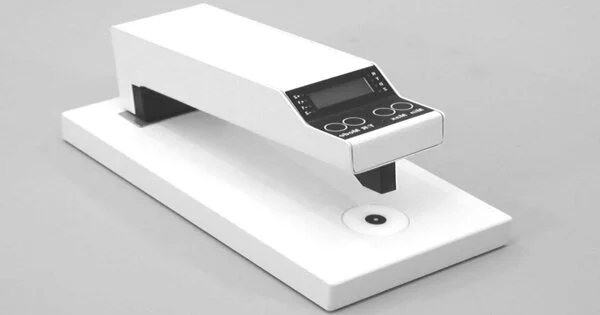A densitometer is a device that measures the optical density of a material, most commonly in photography, printing, and imaging. It is used to calculate the degree of darkness (the optical density) of a photographic or semitransparent material or a reflecting surface. A densitometer is essentially a light source pointed at a photoelectric cell.
The degree to which a material absorbs or reflects light is referred to as optical density. Densitometers are used in a variety of industries to determine the darkness or lightness of an image on a film, paper, or other surface. It calculates the density of a sample placed between the light source and the photoelectric cell based on reading differences. Modern densitometers have the same components, but also have electronic integrated circuitry for better reading.
Here are some common uses of densitometers:
- Photography: Densitometers are used in traditional film photography to measure the density of developed film negatives or prints. Photographers and printers can use this to fine-tune exposure times and processing techniques to achieve the desired level of contrast and tonal range.
- Printing: Densitometers are used in the printing industry to measure the density of inks on printed materials. This ensures color consistency and aids in quality control during the printing process.
- Medical Imaging: In medical imaging, densitometers are used to determine the density of X-ray films. The clarity and contrast of the images are important for diagnosing medical conditions.
- Densitometry in Chemistry: Densitometers are used in analytical chemistry to determine the concentration of a substance in a solution based on its optical density.
- Paper and Pulp Industry: Densitometers are used in paper manufacturing processes to monitor and control the density of pulp.
A light source, a photodetector, and a display or output interface are common components of densitometers. They quantify the amount of light that passes through or is reflected by a material, and the results are frequently expressed in optical density units. Densitometer data assists in maintaining quality standards and achieving consistent results in a variety of applications.
















